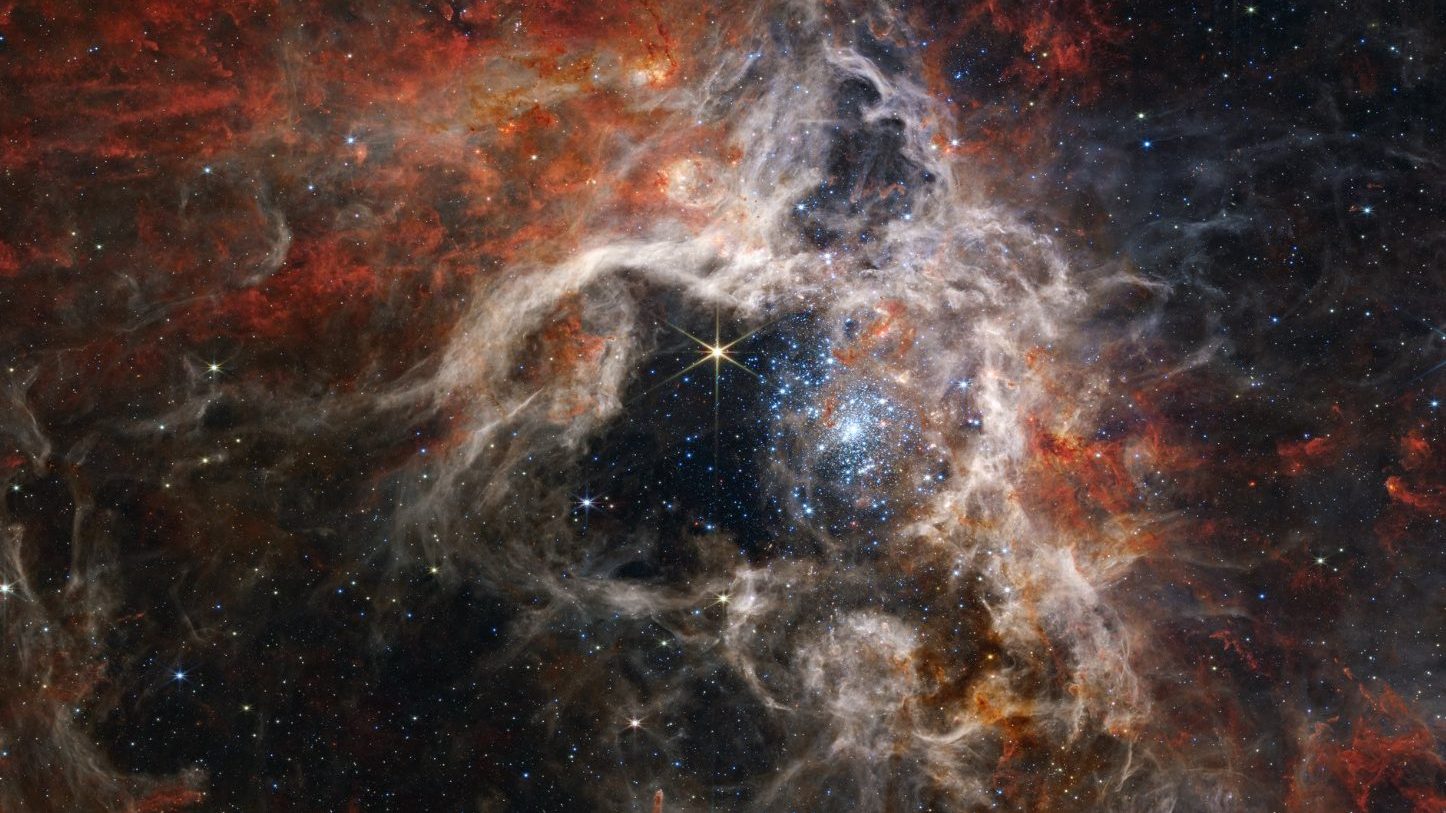The James Webb Space Telescope received a special stellar cradle at the end of its lens. Several images of the Tarantula Nebula have been taken before, but the latest images from the James Webb Telescope provide a clearer and more accurate picture of the star-forming region.
Despite the fact that the human race has been engaged in astronomy for thousands of years, the process of star formation still hides many unanswered questions. Many of them are due to our previous inability to capture sharp images of what is happening behind the thick clouds of the nativity stars. However, the James Webb Space Telescope recently managed to capture a special image of one of these original places, the Tarantula Nebula.
Several pictures of the Tarantula Nebula have been taken before, but the latest images from the James Webb Space Telescope give a clearer and more accurate picture of the star-forming region. In a NASA article.
The composition of the Tarantula Nebula in the Large Magellanic Cloud is made largely of the heavy elements that make up the Earth and we humans. Her study provides insight into how stars form.
This is Webb hunted a giant space tarantula! 🕸️ Take a moment to stare at the thousands of never-before-seen young stars in the Tarantula Nebula. Tweet embed It reveals details of the nebula’s structure and composition, as well as background galaxies: https://t.co/DZePgDpPEH pic.twitter.com/aSmPDqgKTE
– NASA (@NASA) September 6, 2022
NASA employees used various space telescope cameras to photograph the Tarantula Nebula. In the near-infrared image, ‘silk filaments’ – from which the nebula got its tarantula name – can be seen surrounding a cluster of massive, blue-glowing young stars. According to NASA, tens of thousands of these young stars have not been seen before because they are obscured by cosmic dust.
Featured image source: NASA












































